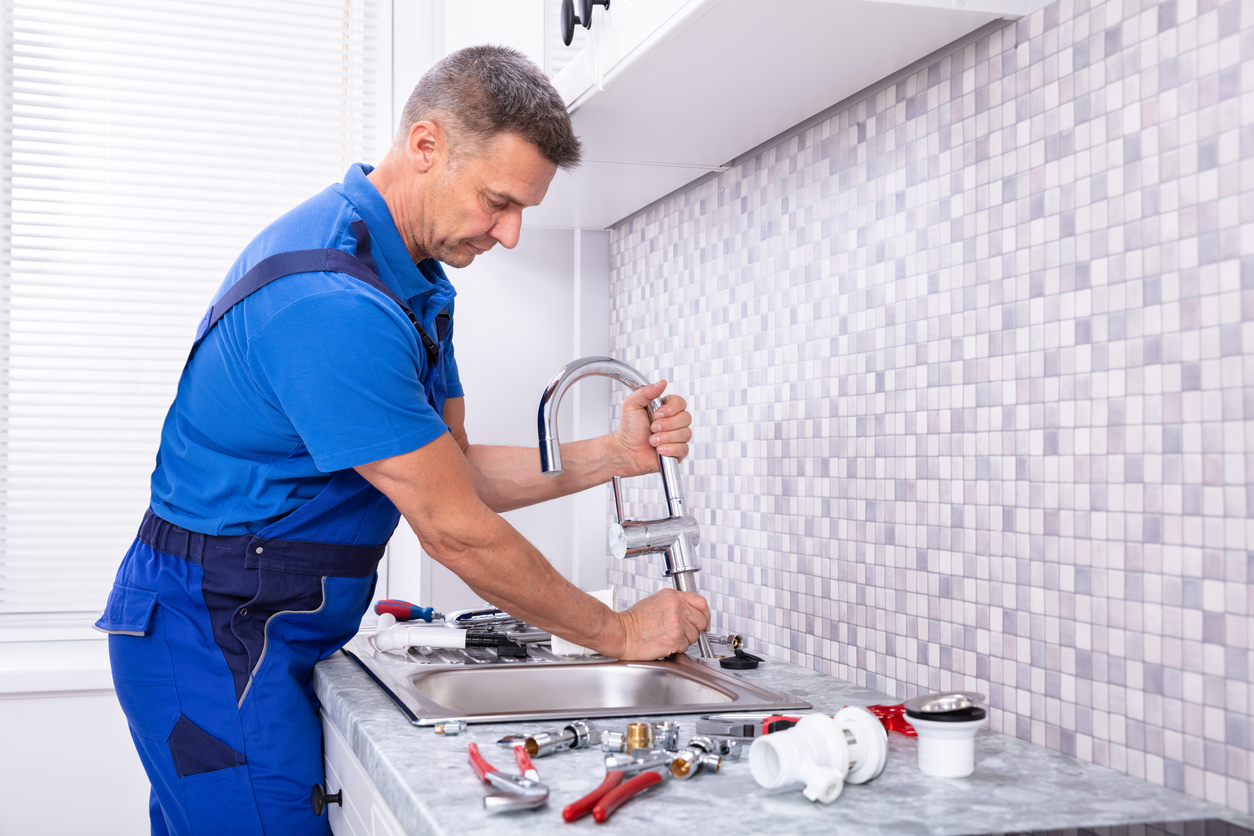Installing a new faucet may look simple but can present several challenges. These issues can range from leaking faucets to improperly fitted components. This guide provides detailed insights into ten common faucet installation issues and their solutions. Understanding these problems can help homeowners and DIY enthusiasts better anticipate these hurdles during installation. Armed with this knowledge, you can take the necessary steps to troubleshoot and repair, ensuring a smooth and successful installation.
1. Leaking Faucet
A leaking faucet is one of the most common issues encountered during the process. Leaks usually occur when components are not fitted properly, or the faucet washer is worn out. First, ensure that all parts are tightened correctly to troubleshoot this issue. If the faucet continues to leak, it may be due to a faulty washer. In this case, turn off the water supply, remove the faucet handle and packing nut, and replace the old washer with a new one. Always remember an adequately done installation can significantly reduce the chances of a leaky faucet.
2. Loose Faucet Handle
A loose handle is another common issue. This usually occurs when components are improperly secured or due to wear and tear. A wobbly handle can lead to water wastage and, in worst-case scenarios, water damage. Troubleshooting a loose handle involves identifying the type of faucet handle – ball, cartridge, or disc. Once identified, turn off the water supply. Then, depending on the handle type, tighten the adjusting ring or the screw at the base of the handle using the appropriate tool. If the issue persists, it is advisable to contact a professional plumber.
3. Incorrect Water Pressure
Incorrect water pressure is a common issue that can arise during the installation. This problem often stems from blockages in the faucet’s aerator, often caused by mineral deposits. These blockages can restrict water flow, leading to either too low or too high water pressure. First, turn off the water supply to troubleshoot and fix this issue. Then, remove the faucet aerator, usually found at the end of the spout, and clean it thoroughly to remove any blockages. If the problem persists after cleaning, consider replacing the aerator.
4. Rust and Corrosion
Rust and corrosion can pose significant problems after installing a faucet. These issues typically result from prolonged exposure to water, high humidity, or abrasive cleaning products. Corrosion can degrade the faucet’s performance and aesthetics over time. To troubleshoot, first identify the extent of the damage. Minor rust can often be scrubbed off using a mixture of baking soda and water. However, more severe corrosion may necessitate component replacement. To prevent future instances, consider installing faucets of corrosion-resistant materials like stainless steel or brass, and avoid using harsh cleaning agents.
5. Water Temperature Issues
Incorrect water temperature is another common problem during the installation. This issue often happens when the hot and cold water supply lines are crossed during installation, resulting in cold water when you want it hot and vice versa. To troubleshoot this issue, check the connections under the sink to ensure the hot and cold water supply lines are correctly connected to the corresponding faucet valves. If the lines are crossed, shut off the water supply, disconnect them, and reconnect them properly. If the issue persists, it may require professional assistance.
6. Faucet Doesn’t Fit the Sink
A common issue is finding that the faucet doesn’t fit the sink. This can occur when the faucet size or the number of installation holes doesn’t match the sink. Always measure the sink and check the specifications of the faucet before installation to avoid this problem. If you’ve already purchased an incompatible faucet, consider purchasing a base plate to cover any extra holes. To fix an existing issue, you might need to replace the faucet with one that fits or modify the sink to accommodate the faucet, though the latter should be a last resort due to potentially high costs.
7. Wrong Size Supply Lines
Another common issue arises when the supply lines are the wrong size. This discrepancy can result in leaks or inadequate water flow. To troubleshoot, turn off the water supply and disconnect the supply lines. Then, measure the diameter of the supply pipes and the faucet inlets. If they don’t match, you’ll need to purchase new lines or adapters that fit. When reattaching, ensure a tight connection to prevent any leaks. Always remember that using the correct size supply lines during installation is crucial for properly functioning your faucet.
8. Poorly Aligned Faucet
A poorly aligned faucet can disrupt your kitchen or bathroom’s aesthetics and cause water to splash outside the sink. This issue generally arises from improper positioning. To resolve this, first, ensure the water supply is turned off. Gently loosen the mounting nuts underneath the sink and realign the faucet correctly. Tighten the nuts back, ensuring the faucet is in the proper position. Check the alignment by turning on the water and observing the water flow. For persistent alignment issues, consider seeking professional assistance.
9. Inadequate Spacing
Lack of enough space can make faucet use difficult. Considering the faucet’s size and operation during selection can ensure adequate spacing.
10. Lack of Proper Tools
The installation requires specific tools. Not having the right tools can make installation difficult and potentially cause damage. Preparing all necessary tools before starting the installation process is always advisable.
In conclusion, proper faucet installation is crucial for long-lasting performance and to prevent avoidable issues, such as leaks, incorrect water pressure, and rust. Regular maintenance and the use of quality materials can significantly reduce these problems.
If you encounter any difficulty during installation or troubleshooting, don’t hesitate to seek professional help. At Drain Flo Plumbing, your convenience is our priority. Contact us at (813) 391-1500 to schedule a consultation today.



